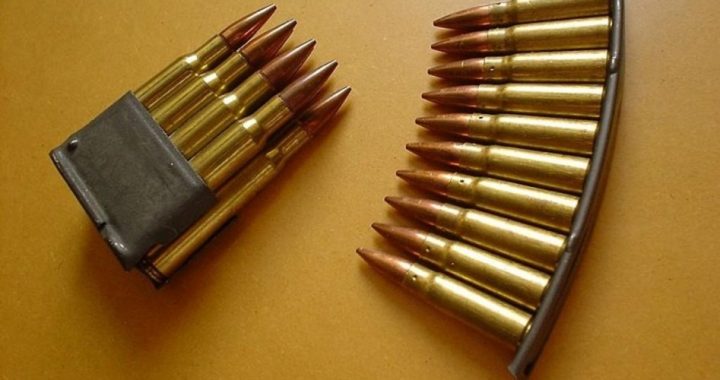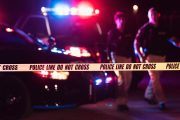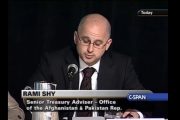
When President Barack Obama delivered his televised “Now Is The Time” plan to reduce “gun violence” on January 16, did he know that a white paper from his own Department of Justice had already shot down some of his key proposals? Was he not given this information, or did he decide to ignore it and exploit emotions surrounding the Sandy Hook school shooting to score political points and advance an agenda?
A white paper by the National Institute of Justice of the DOJ issued on January 4 and obtained by the National Rifle Association contains admissions that strongly undercut fundamental premises of the president’s proposals. President Obama’s two primary propositions that he declared would “better protect our children and our communities from tragic mass shootings like those in Newtown, Aurora, Oak Creek, and Tucson” are presented in “Now Is The Time” as:
1. Closing background check loopholes to keep guns out of dangerous hands;
2. Banning military-style assault weapons and high-capacity magazines.
However, a leaked nine-page briefing paper by Greg Ridgeway, Ph.D., deputy director of the National Institute of Justice (NIJ) at the Department of Justice, brings up some inconvenient facts that the administration obviously didn’t let get in the way of its gun control freight train.
Entitled “Summary of Select Firearms Violence Prevention Strategies,” the NIJ paper points out that background checks and gun bans such as those proposed by the president have proven not to be effective in reducing violent crime. It also states:
On average there are about 11,000 firearm homicides every year….
Fatalities from mass shootings (those with 4 or more victims in a particular place and time) account on average for 35 fatalities per year. Policies that address the larger firearm homicide issue will have a far greater impact even if they do not address the particular issues of mass shootings.
Before proceeding, we must pause for a fact check and correction. NIJ’s Dr. Ridgeway’s citation of “11,000 firearm homicides” annually in the United States is a false factoid that has worked its way through the media to such an extent that it is commonly believed to be true — but it is not. CNN’s Piers Morgan has been citing this supposed “fact” nightly for weeks. Cincinnati television reporter Ben Swann does a good job of breaking down and refuting this and other related statistical sleight-of-hand tricks in the gun debate on his “Reality Check” (see here).
As Swann points out, using official FBI sources, in 2011 there were not 11,000 firearm homicides, but 8,583. And of that number, 400 were justifiable homicides by law-enforcement officers. Another 260 were justifiable homicides by private citizens (shooting robbers, rapists, burglars in self-defense). So the actual criminal homicides were under 8,000, not 11,000. The NIJ has inflated the firearms homicides by some 37 percent.
That’s not a minor discrepancy but, nevertheless, on to the main point at hand: One of the key admissions in Dr. Ridgeway’s NIJ paper, to wit, that from a statistical standpoint, President Obama’s focus on “mass shootings” is misguided since those types of killings — totaling about 35 deaths per year — amount to less than half a percent of the annual gun-related homicides. So, it would seem that policies aimed at the few high-profile mass shootings — even if they worked superbly and reduced those incidents — would have a negligible effect on the 99+ percent of gun-related homicides. But President Obama’s point man on this issue, Vice President Joe Biden, admitted that no legislation would impact mass shootings either. “Nothing we’re going to do is going to fundamentally alter or eliminate the possibility of another mass shooting or guarantee that we will bring gun deaths down to 1,000 a year from what it is now,” Biden told reporters at a Washington, D.C. press conference on January 31.
Some of the other findings in the NIJ/DOJ report that run counter to the anti-gun ethos and arguments of the Obama/Biden/Feinstein/Schumer chorus undermine claims made for gun buyback programs, background checks, and bans on semi-automatic firearms and high-capacity magazines.
President Obama attempted to load the issue with inflammatory rhetoric, using references to “weapons of war and massive ammunition magazines” and “military-style assault weapons and high-capacity magazines.” Of course, he is not the only one using these terms to sow confusion and lead uninformed members of the public to falsely equate semi-automatic civilian rifles and handguns owned by millions of American citizens with fully automatic military machine guns. Dr. John R. Lott is one of the many experts who have thoroughly exposed and patiently explained the very significant misinformation and disinformation involved in the common usage of these terms. Here is one of Prof. Lott’s explanations, during the media frenzy following the Aurora, Colorado, theater shooting last year:
Yes, the M&P 15 and the AK-47 are “military-style weapons.” But the key word is “style” — they are similar to military guns in their aesthetics, not in the way they actually operate. The guns covered by the federal assault-weapons ban (which was enacted in 1994 and expired ten years later) were not the fully automatic machine guns used by the military but semi-automatic versions of those guns.
The civilian version of the AK-47 uses essentially the same sorts of bullets as deer-hunting rifles, fires at the same rapidity (one bullet per pull of the trigger), and does the same damage. The M&P 15 is similar, though it fires a much smaller bullet — .223 inches in diameter, as opposed to the .30-inch rounds used by the AK-47.
The Aurora killer’s large-capacity ammunition magazines are also misunderstood. The common perception that so-called “assault weapons” can hold larger magazines than hunting rifles is simply wrong. Any gun that can hold a magazine can hold one of any size. That is true for handguns as well as rifles.
In order for bans on large-capacity magazines to have any effect, says NIJ’s Dr. Ridgeway, they must be comprehensive and draconian, something the administration insists it does not intend to do. Ridgeway writes:
In order to have an impact, large capacity magazine regulation needs to sharply curtail their availability to include restrictions on importation, manufacture, sale, and possession. An exemption for previously owned magazines would nearly eliminate any impact. The program would need to be coupled with an extensive buyback of existing large capacity magazines. With an exemption the impact of the restrictions would only be felt when the magazines degrade or when they no longer are compatible with guns in circulation. This would take decades to realize.
Decades? But President Obama and his cohorts would have us believe that there is not a moment to lose and we must act now, immediately, so that we can immediately effect changes that will save lives.
The NIJ paper also shoots down the Obama administration’s “universal background checks,” unless the administration is willing to go all the way to gun registration, which the White House says it is not contemplating — because that would surely galvanize even greater resistance. Regarding the background checks, Ridgeway says: “Effectiveness depends on the ability to reduce straw purchase, requiring gun registration.” (Emphasis added.)
Moreover, Ridgeway undercuts the argument of the gun banners that states with lenient gun laws are responsible for “crime guns” that are used in the more restrictive states. He wrote:
An NIJ funded study of the Los Angeles illicit gun market noted: “Results showed that many crime guns were first purchased at local — that is, in county — licensed dealers, rather than from out of state. That is, contrary to the conventional wisdom that crime guns were being trafficked across state borders from places with less stringent regulations, such as Arizona and Nevada, we found that a majority of the guns used in crimes were purchased in Los Angeles County.
Dr. Ridgeway’s NIJ study contends further: “Gun buybacks are ineffective as generally implemented.” And, according to the NIJ’s top researcher, the Australian gun buyback program and its associated stringent regulations have not had a noticeable impact on crime. He says a 2006 study “using Australian data from 1979 to 2003 shows that the firearm homicide rate was already declining prior to the firearm reforms and that there is no evidence that the new legislation accelerated the declines. This remains true when data through 2007 are added to the analysis.”
Media Reaction: Clobber the NRA for Pointing Out the Obvious
What is interesting, though hardly surprising, is the general response to the Ridgeway NIJ paper by the major media. The Associated Press led the way with an article by Alan Fram that ran in hundreds of papers and websites. “NRA Uses Justice Memo to Accuse Obama on Guns” was the commonly used headline for Fram’s AP story that worked hard to present the administration’s talking points on the issue and to cast the NRA’s use of the leaked NIJ memo in a negative light. It begins:
The National Rifle Association is using a Justice Department memo it obtained to argue in ads that the Obama administration believes its gun control plans won’t work unless the government seizes firearms and requires national gun registration — ideas the White House has not proposed and does not support.
The NRA’s assertion and its obtaining of the memo in the first place underscore the no-holds-barred battle under way as Washington’s fight over gun restrictions heats up.
“The NRA’s Cox declined to say how his organization obtained the memo,” the AP story reported, seeming to imply that there may be something untoward in the NRA’s acquisition of the document. That is amusing inasmuch as the AP, like virtually all of the other MSM organizations, regularly traffics in leaked official documents.
Related stories:



